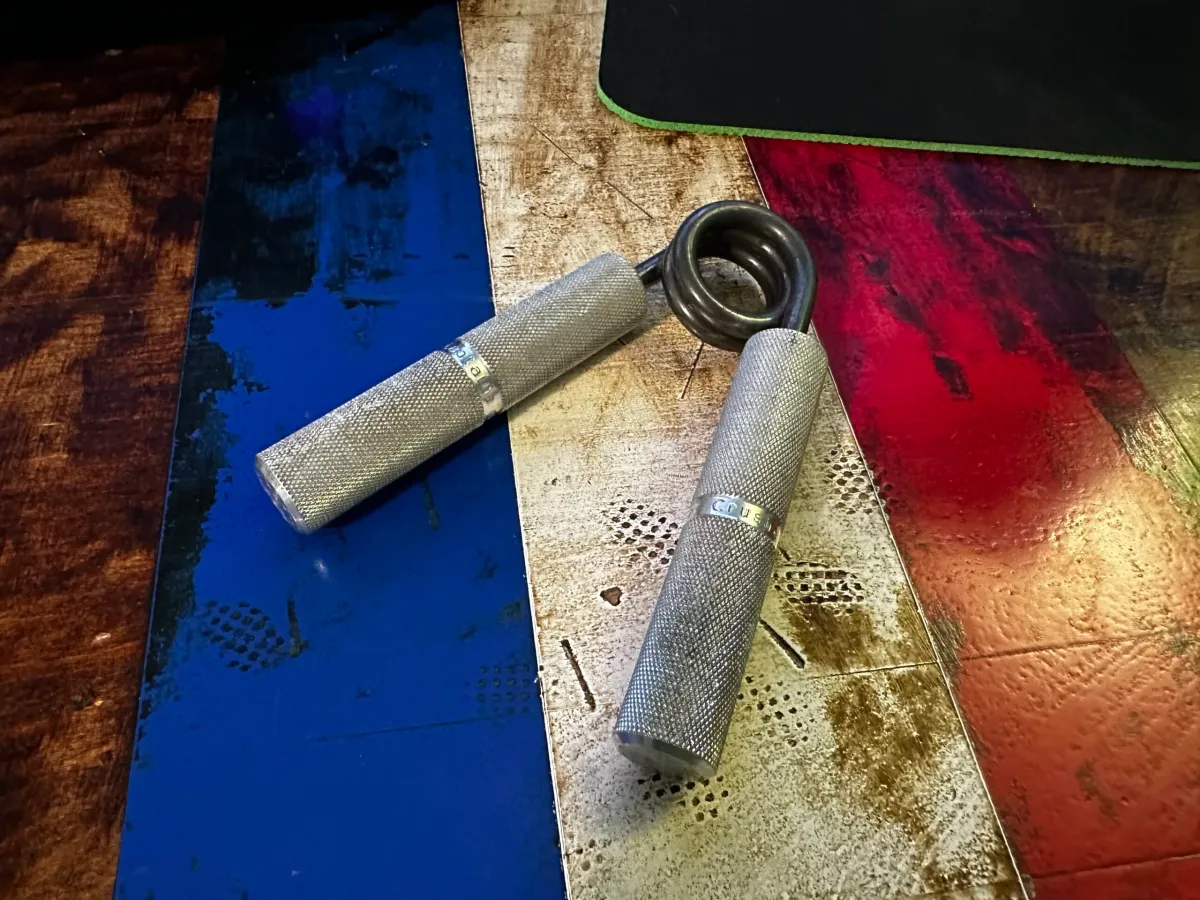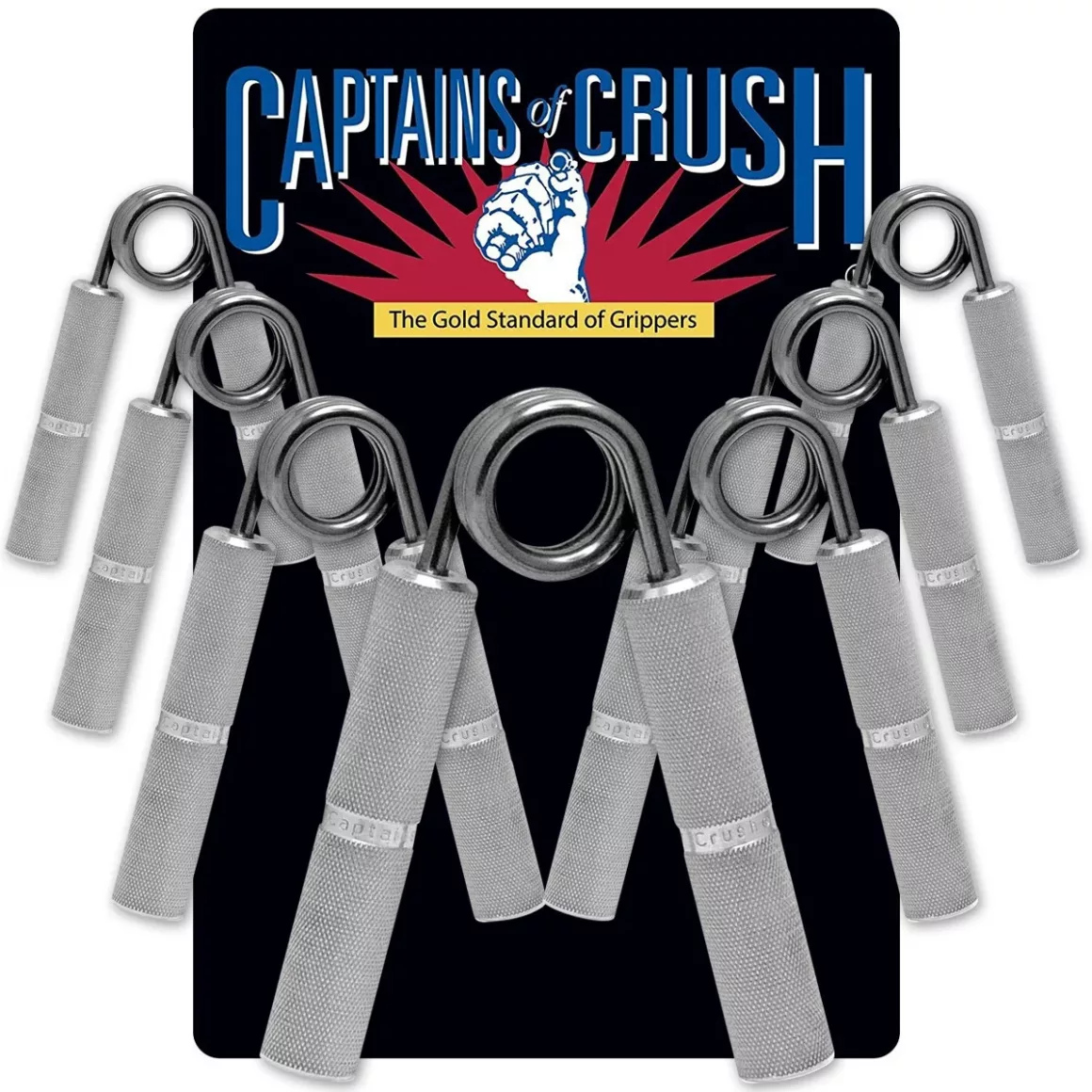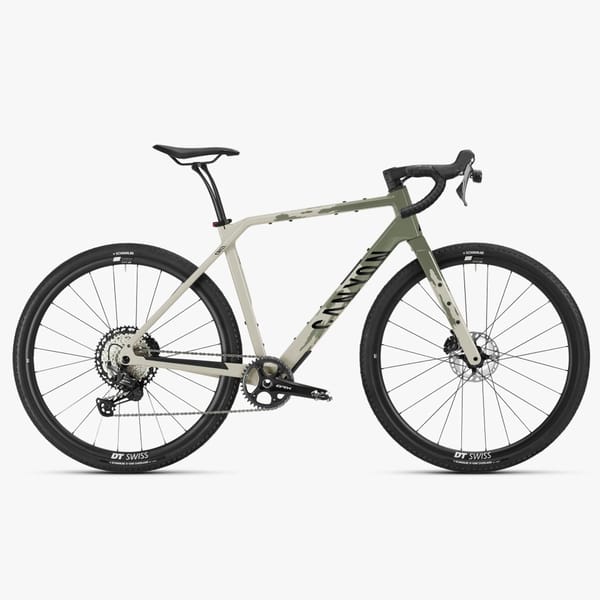Off Season Grip Training for Faster and Safer Cycling

I’ve noticed a trend in my last few marathon XC and gravel races, riders taking their hands off the bars in smooth sections of a descent to share out their hands and force open a stuck grip. Even with the advent of disc brakes, the effort of gripping the bars and using the brakes over long, mixed terrain descents leads to hand pain and grip fatigue. Grip strength doesn’t get much attention in cycling circles, but I’ve found a strong, enduring grip to be a huge confidence boost when the terrain gets rough.
Research shows that grip strength is a marker of overall body strength and that lack of grip strength is a predictor of poor health.1 Research also shows grip strength decreases with age, with one study showing women’s grip strength decreasing at a faster rate, and men have twice the grip strength as women.2
Here’s how to build an iron grip.

These are your grandfathers squeaky, wimpy little grippers. In 1993, Ironmind developed an aircraft-grade aluminum gripper called Captains-of-Crush for serious strength athletes and strongmen as an alternative to the cheap plastic variety common at the time and they can help you build serious forearm strength. There are a number of models to choose from. For most athletes, I would start with a trainer, #1 and #1.5.
Grab yours here.
| CAPTAINS OF CRUSH MODEL | POUNDS OF PRESSURE TO CLOSE |
|---|---|
| Guide | 60 |
| Sport | 80 |
| Trainer | 100 |
| Point Five | 120 |
| #1 | 140 |
| #1.5 | 167.5 |
| #2 | 195 |
| #2.5 | 237.5 |
| #3 | 280 |
| #3.5 | 322.5 |
| #4 | 365 |
Ironmind also has a great set of training instructions they send out with every gripper, and the program works.
Low Reps = High Strength
Those cheap plastic-handled grippers you had as a kid were so easy that you probably got
used to doing sets of 50 or 100 reps because it took that many before you got tired. But if
you were trying to bench press 500 pounds, would you do sets of 50 or 100 push-ups? No,
you would use the heaviest weight you could, and you would focus on doing low reps. This
proven path to increased strength applies in the gripper world just as it does in the barbell
world, so before we lay out your training program, let’s define three basic terms.
Warm-up gripper: This is where you begin each workout. Ideally, this is a gripper that
allows you to do 10 reps or so quite easily. Even though this is low-intensity (i.e., a low
percentage of your one-rep maximum), it is where you set the stage for your workout.
Properly done, warm-ups will reduce your chance of injuries, boost your maximum perfor-
mance, and reduce your recovery time in between workouts. As you get stronger, you will
have more than one warm-up gripper: it is like adding plates to the bar when you are doing
squats, for example, and you might end up doing reps with 2, 3, or 4 progressively harder
warm-up grippers.
Work-set gripper: This is where you do the reps that are specifically aimed at increasing
your strength. Ideally, your work-set gripper will put you in the range of 5–7 reps, plus or
minus 2–3 reps, on an all-out set to failure. This is the gripper you use for your maximum-
effort work sets, the part of your workout where you make progress in terms of boosting
your strength.
Challenge gripper: This is the gripper that you are trying to close next—it’s a step beyond
where you are right now, so whether it’s a CoC No. 1, CoC No. 2 or CoC No. 3, for example,
it represents your goal for developing your next level of grip strength.
Now, let’s take a look at a proven training program
1) Start with 1 or 2 sets of about 10 reps with your warm-up gripper. Even though these
reps are quite easy for you, be sure to concentrate on them. If anything, exaggerate the
precision of your form on your warm-up sets, taking advantage of the fact that with a sub-
maximum effort, it’s easier to concentrate on your technique and execute each rep perfectly.
If you don’t have a suitable strength CoC gripper, use whatever you might have—even an
ordinary sponge rubber ball can do the trick. Remember, even though these are your warm-
up sets, don’t treat them lightly: these sets establish the tone of your workout as they warm
you up psychologically as well as physically.
2) Next, go to your work-set gripper and do 1 to 3 sets with a maximum effort, going to
failure. Yes, these are hard, which is why they are called “work sets.” After you have
become acclimated to training, you must really fight for each rep in these work sets—this is
where and how you will get stronger.
3) In addition to working your flexors (the muscles that close your hand) with your Captains
of Crush grippers, we highly recommend that you do 2 sets of 10–15 reps with the Expand-
Your-Hand Bands, training the extensors (the muscles that open your hand).
Repeat this workout 2 or 3 times a week, and the effort you put into it will be reflected in
your progress. Armed with a Captains of Crush gripper, a set of Expand-Your-Hand Bands,
this training program, and the motivation to succeed, in a short time you will see very
noticeable gains in grip strength, not to mention improved hand health.
Here’s a great exercise for increasing grip endurance. Grasp a pull up bar, but instead of doing a complete pull up, just hang as long as you can. A bar hang is also a great way to relieve some pressure on your back if you’ve been standing for a long time. Rest 1-2 minutes between efforts and complete 5 hangs. To make it harder wrap a towel around the bar.
Grab a couple heavy dumbbells, kettlebells or load up a hex bar. Grasp the weight with your arms at your side and hold it there. Aim for 60-90 seconds and complete 5 reps. You can just stand and hold or walk around to add core stabilization to the workout. Remember to keep your shoulders engaged throughout.
The exercises above will help you build strength and endurance for your grip, but to reduce hand and forearm fatigue on the bike you also need to address how you ride. White knuckling every descent with a death grip will make the ride rougher, which will make you want to grip even tighter. For a smooth ride, learn to use a lighter grip on the bars with relaxed shoulders and bent elbows.
On long descents, learn to rely less on the brakes and more on smoothness. Pickup speed where it is safe to do so, bleed off some of that brake heat and hit the brakes hard when you need to slow down. Just like motor racing, you want high speed until a hard brake not constant braking which makes you slower overall and which puts tons of stress and heat into the braking system.
Smooth is fast.
- Sasaki H, Kasagi F, Yamada M, Fujita S. Grip strength predicts cause-specific mortality in middle-aged and elderly persons. Am J Med. 2007;120(4):337-42. ↩
- Bassey EJ, Harries UJ. Normal values for handgrip strength in 920 men and women aged over 65 years, and longitudinal changes over 4 years in 620 survivors. Clin Sci. 1993;84(3):331-7. ↩





